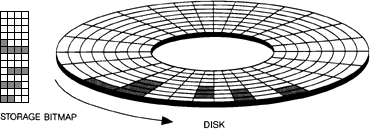A directory lists the name, size, modification time and starting cluster of each file or subdirectory it contains.

Transfer time = Rotation time ×
( Number of bytes transferred / Number of bytes on a track )
A directory lists the name, size, modification time and starting cluster of each file or subdirectory it contains. |

|